NORTH WALES COAST RAILWAY:NOTICE BOARD
Rheilffordd arfordir gogledd Cymru: Hysbysfwrdd
15 June 2020





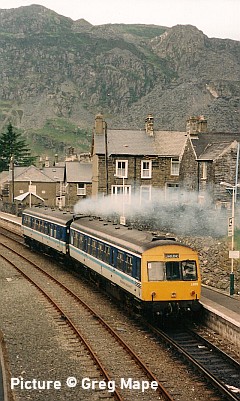
Forthcoming events
(see also our Calendar page for venues)
Note: we have removed all entries up to the end of August as the events are cancelled. The Railway Touring Company North Wales trains in July are no longer being advertised.
September 2020
Saturday 5 September Steam at Chester 'The Cheshireman' (Railway Touring Company). Norwich to Chester. Loco 6233 for part of the journey.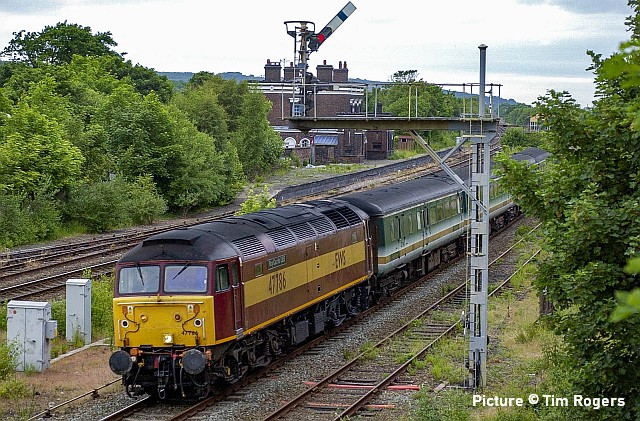
On 15 June 2003, 47 786 Roy Castle OBE passes Holywell Junction with train 1G95, 06:45 Holyhead to Birmingham New Street. Picture by Tim Rogers.
From Dave Sallery's archive
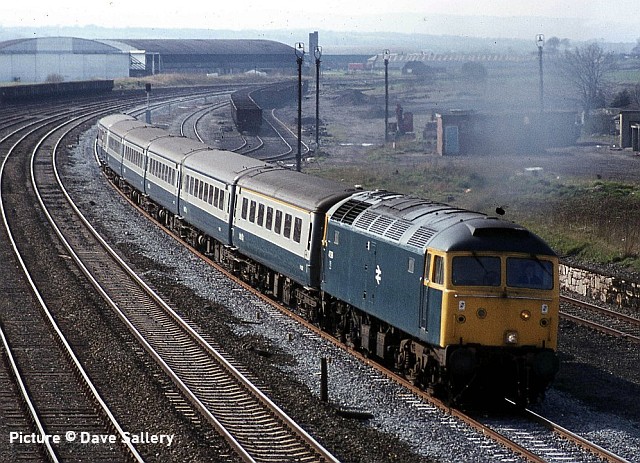
The classic British Rail style: 47 435 passes Mold Junction with a rake of air-conditioned Mk2 coaches on 21 April 1984. In 1964 this was the first Crewe works-built Class 37 to enter service, it led a quiet life, never being named, and only having one livery change, from original green to blue, and one re-numbering, from D1550.
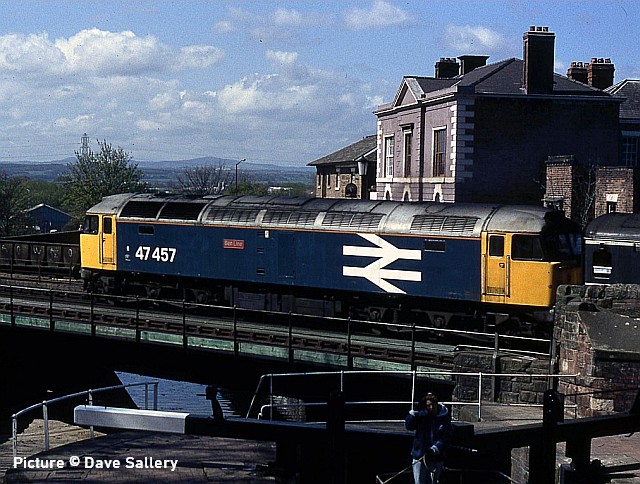
The 'Large Logo' version: 47 457 Ben Line passes Northgate Locks, Chester on 12 April 1990 with Telford's Warehouse behind. Ben Line is a shipping company; the name was applied at Southampton in 1986, and removed soon after the picture was taken, with a view to transferring it to a Class 90, but this never happened. In July 1990 457 was transferred to Tinsley depot, where it received one of that depot's 'unofficial' names, Gazelle. It was withdrawn in 1992 and scrapped in 1997.
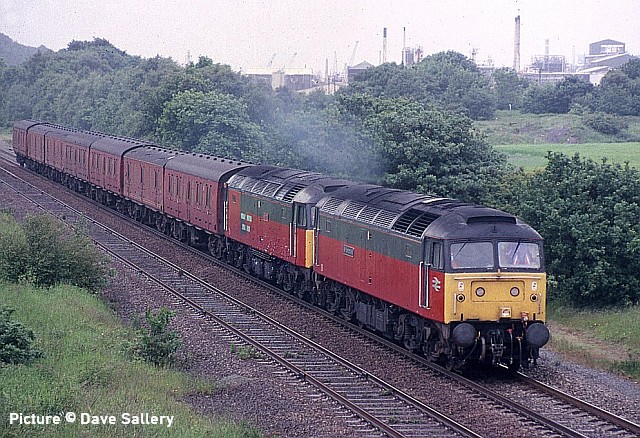
9 June 1994: Not a parcels train, but a test run from Crewe Works for 47 474 Sir Rowland Hill and 47 767 behind for 'insurance'.
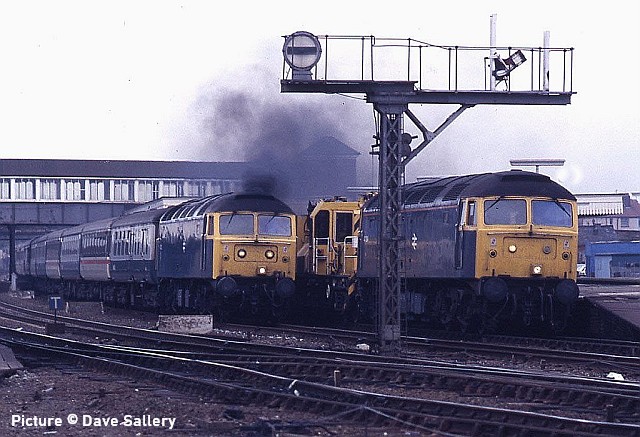
47 532 on a multi-coloured set of coaches overtakes 47 284 on a ballast train at Rhyl, 30 April 1987. 47 532 later received an unofficial name, Blue Peter, inspired by the steam loco of that name, which was 60532. It was transferred to the Parcels sector in 1992, receiving 'Res' livery before withdrawal in 1998.
Borderlands 153s
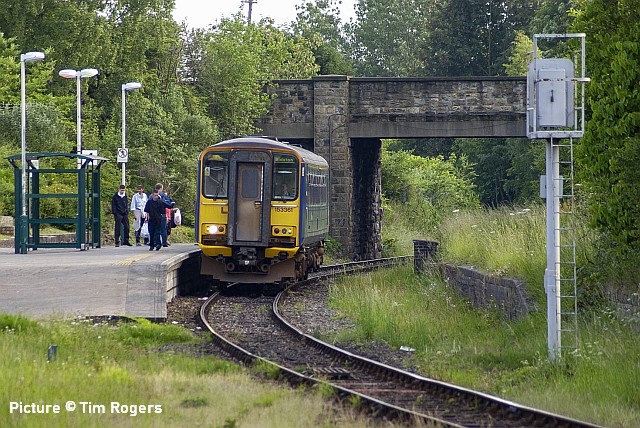
Although a recent attempt to use Class 153 single-units on the Wrexham - Bidston service was fended off by public response, seventeen years ago, in the last months of First North Western's reign in North Wales, 153s were the daily offering, as seen by Tim Rogers on 13 June 2003. Above, 153 361 calls at Wrexham General platform 4, which was once Wrexham Exchange station. This unit is now back in North Wales with TfW.
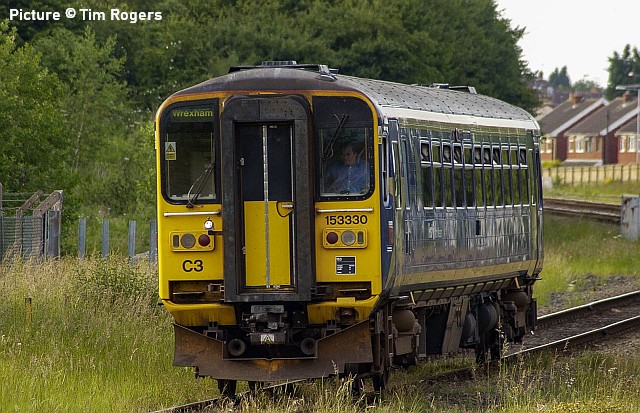
On the other diagram, 153 330. Clearly there was an electrical fault, as a crew 'bardic' lamp was acting as a headlamp, and a tail lamp was attached to the rear. This one is still (we think) with Northern.
One day sooner or later, the current Class 150s on the line will be replaced on this line by Class 230 hybrid-power units, of which five on order of which one has recently been on test. A doubling of the train frequency to half-hourly will require four units, which seems to mean that 230s won't be appearing on the Conwy Valley and Chester-Crewe service as originally announced.
Timetable note
Transport for Wales have injected an additional service into the two-hourly Coast line 'Covid service.' Aimed at Ferry passengers, it departs from Holyhead at 12:53 and runs to Crewe with stops only at Llandudno Junction and Chester, arriving at Crewe before the all-stations 12:28. It is expected to run Sundays-excepted until at least 4 Jule when there will be a further timetable change.
DMU drag - by 'Skimpler'
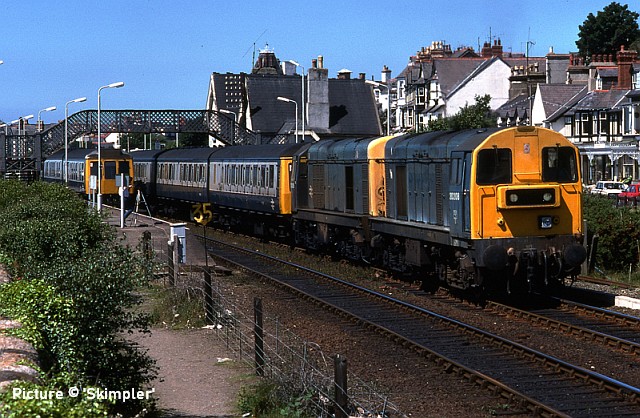
This is 15 July 1989 in Deganwy. 20 208 and 20 005 dragging a 3-car suburban DMU set on a service which was 2P82, Llandudno to Derby. They had worked the corresponding down service dragging the same DMU, and on time so I think this combination had just been rostered to work this train rather than being a failure on route. One can only assume Derby were fresh out of working DMUs that morning. The two 20s are two of Toton's finest at the time, but I notice 208 has a 'Scottie dog' on the far end so maybe not at Toton that long. I'd love to know if the chap videoing on the platform has this out on YouTube.
Looking back with David Pool - Altrincham area
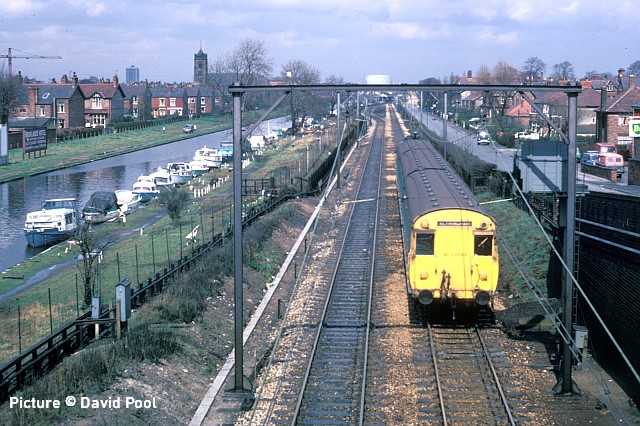
The 1500V DC Electrics on the Altrincham line were nearing the end of their lives in 1970, being withdrawn in 1971 when the DC system was replaced. On 18 April 1970 a train from Oxford Road to Altrincham headed by M29243 is approaching Brooklands.
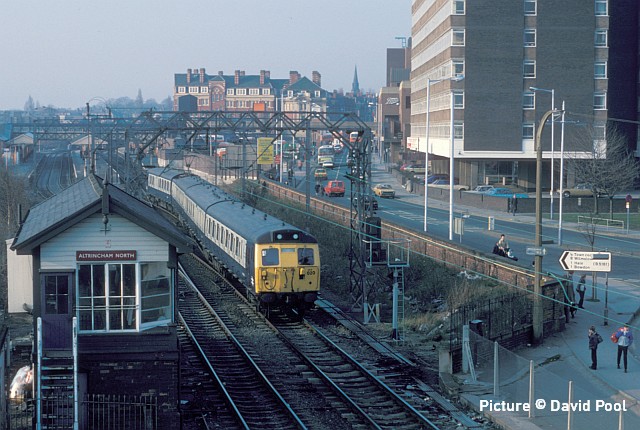
With the line now electrified at 25kV AC, the AM4 units built for the Crewe to Manchester and Liverpool main lines could be used. Unit 304 020 is leaving Altrincham with the 08:20 to Crewe on 5 April 1984.
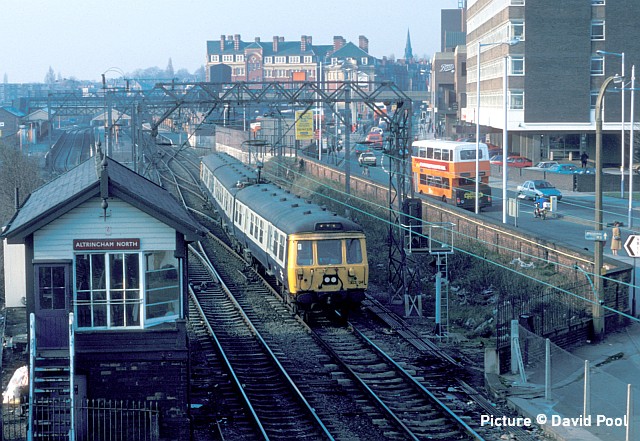
On the same day, the next departure from Altrincham was unit 303 041, forming the 08:40 to Wilmslow, Some of these 'Blue Train' electrics had been transferred to the North West when they were displaced from the Glasgow suburban lines by the newer Class 320 units.
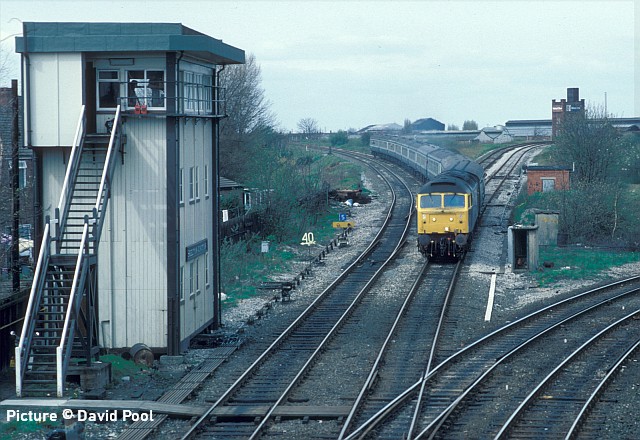
At first sight this does not seem to be a particularly unusual photograph, but on Sunday 28 April 1985 the main line between Crewe and Manchester was blocked, and trains were diverted. The 08:32 from Birmingham New Street to Manchester Piccadilly was routed through Warrington Arpley and Latchford, and 47 530 is passing Skelton Junction box on the line from Lymm. The adjacent out of use line went to Glazebrook, where it joined the Cheshire Lines Committee main line, and the line from Navigation Road is coming in on the right hand side.
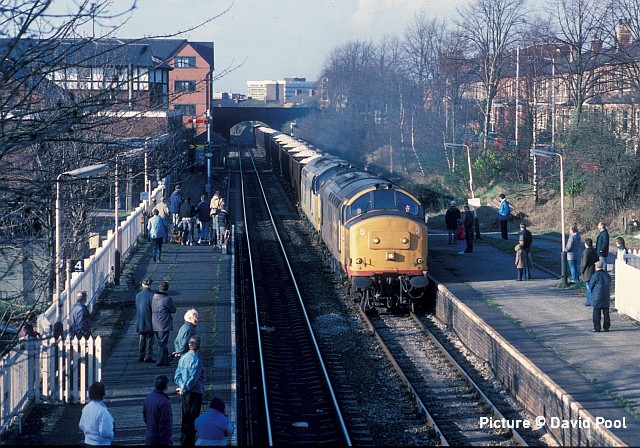
The Tunstead to Oakleigh trains did not normally have an audience, but the explanation is that Black 5 5407 was due on a Steam Special, which was following the freight. Much as I liked steam, I have to confess that 37 682 and 37 683 made a more interesting shot at Hale on 24 March 1989.
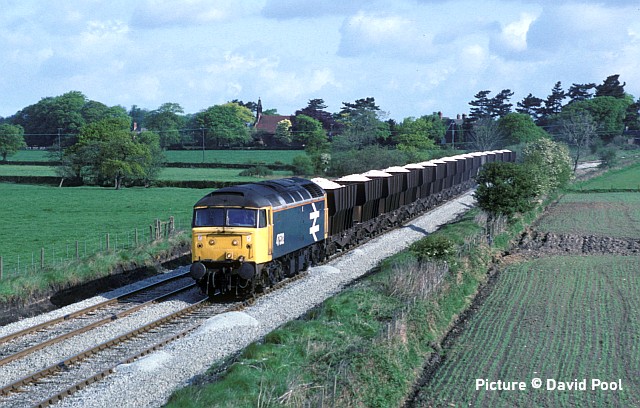
The 15:40 Tunstead to Oakleigh freights were often double headed by Class 37s at weekends, but on Saturday 13 May 1989 a single Class 47 was being used, and is seen at Ashley. The 15 hopper wagons on this day were easily handled by 47 530, but the more usual load of at least 20 wagons would probably have needed a pair of Buxtonís 37s.
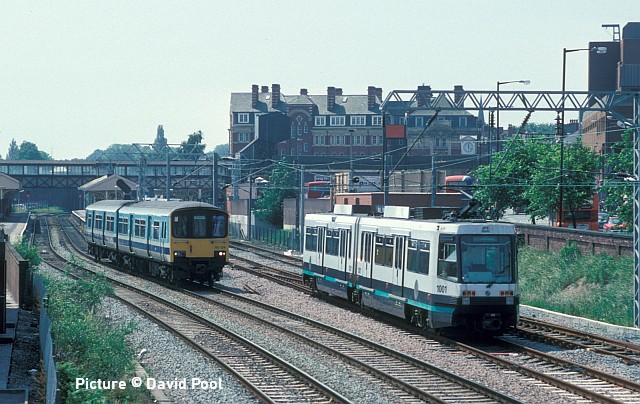
The changes to the track layout at Altrincham station are seen in this view on 6 June 1992. Unit 150 139 in Provincial livery is leaving with the 11:16 from Chester to Wigan, while T-68 tram 1001 is approaching the Metrolink platforms. My understanding is that the tram service started on 15 June, so this must have been a test run.
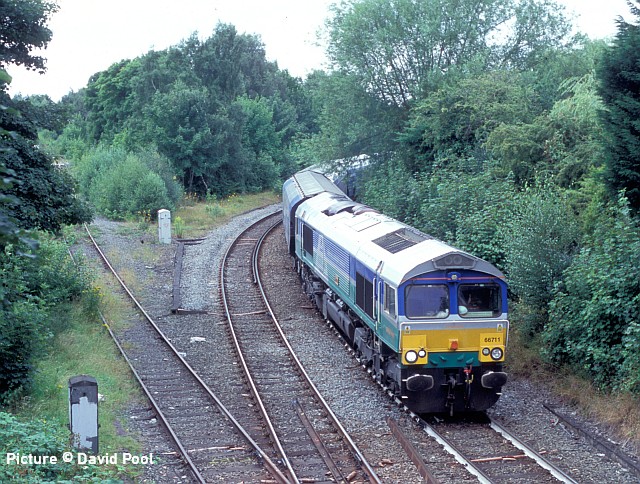
In 2017 I had been wanting to photograph the GBRf locomotive 66711 Sence, and heard it was being rostered for the Drax trains from Liverpool Bulk Terminal. I went to Earlestown on 24 July, thinking that I could spend some time at Winwick Junction if it didnít appear, but I was lucky and got a reasonable shot of 6E10 on the Earlestown curve. As usual I thought I might be able to get a better shot later, and decided to head for the Altrincham area, since the M6 and M56 would get me there while the train made its way through Northwich. Remembering Skelton Junction from 30-odd years earlier, this seemed to be worth trying. I donít remember the bridge parapet being as high in 1985, but the stepladder in my boot was useful, and my shot of 66 711 showed how the junction had changed, with only an 'out of use' single line to Partington remaining. Beyond Partington the tracks are lifted over the Cadishead Viaduct towards Glazebrook.
80079 takes on coal
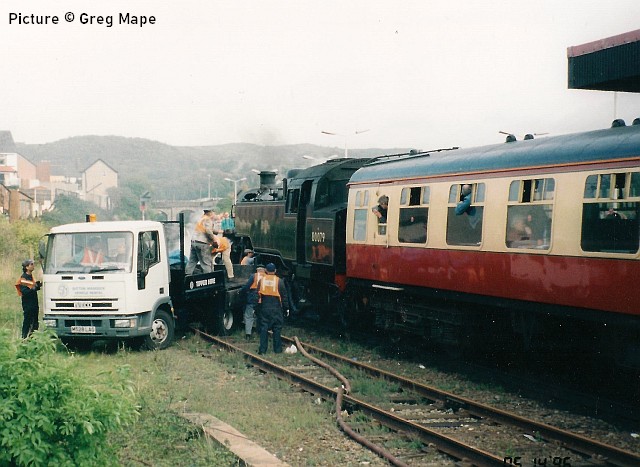
Greg Mape has unearthed this image from 1998 or 1999, showing standard 2-6-4T 80079 taking on both water and coal. This railtour, the 'Conwy Climber' of 2 May 1998 was advertised as the first steam train up the Conwy Valley line since 1967, but was dogged with problems and failed to reach Blaenau Ffestiniog - the saga is related on Dave Sallery's website.
Also, it had been planned to add extra coal as well at water at Llandudno Junction. The plan was for the loco to stand in the 'Tamper siding' opposite Platform 1 were a lorry carrying the coal could park alongside. However it was discovered that the points to the siding could not be moved because Platform 1 was occupied, so the loco was coaled by throwing lumps of coal across the siding into the bunker; Greg's picture captures this operation in progress.
The following day, with four coaches instead of six, the loco succeeded in covering the whole line. The following year, 80079 appeared on the Conwy Valley again, and caused a problem again. 80079 still exists, but hasn't run since 2002, and is currently a static exhibit at Highley on the Severn Valley line.
Lindow Moss Railway - images by Trefor Thompson
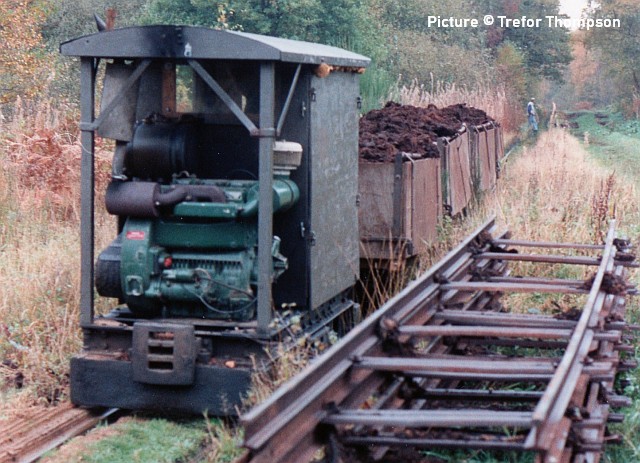
A long way from North Wales, but regular contributor Trefor Thompson offers these images which we hope are of interest. The pictures were taken on Lindow Moss, near Wilmslow, Cheshire in November 1995.
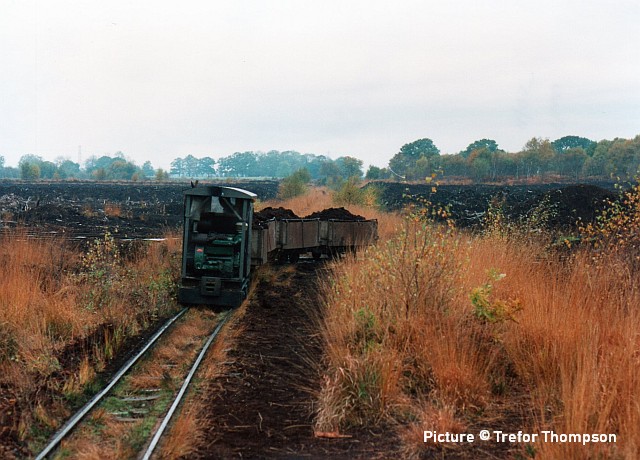
The line, which carried extracted peat to a processing works, was relatively short -
probably about half a mile to three quarters depending where the excavation
was taking place at the time.
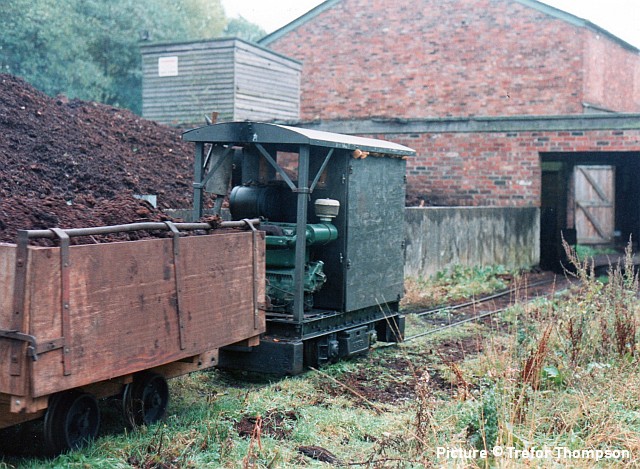
The line was a typical roughly laid peat railway as can be seen from the photos.

A colleague of Trefor who was writing a book on the Fenns and Whixall Moss at the time had managed to get me a visit to Lindow and it was a simple but fascinating operation. Emptying the wagons was a very simple, basic and possibly hazardous affair as can be seen.
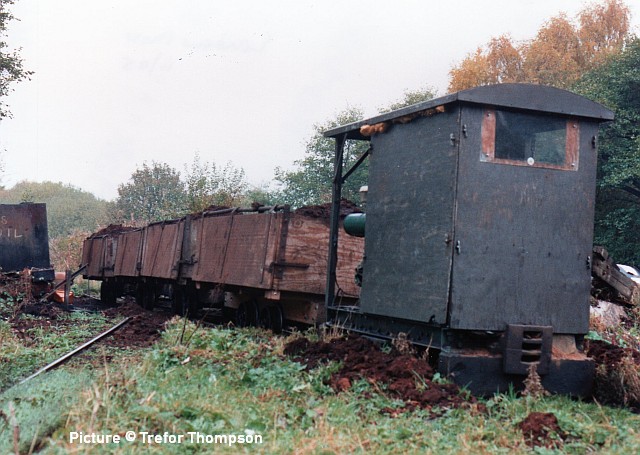
The little Lister loco was the only operational loco at the time and it spent its time propelling four empty wagons from the main works to the extraction site out on the moss.
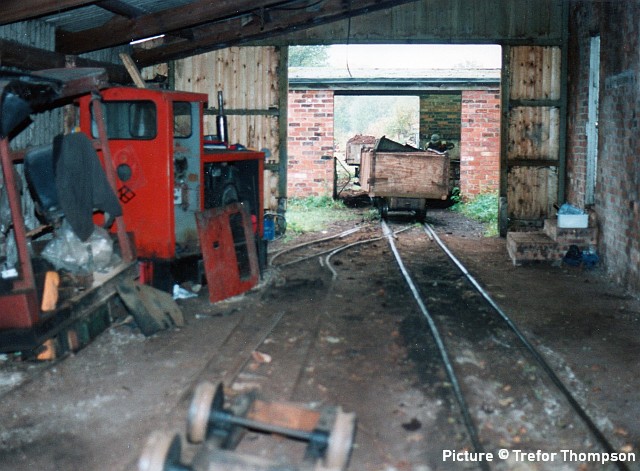
Another Lister (52328) and an Alan Keef loco (AK4) lay abandoned in the shed. It has been reported that the locos are still there.
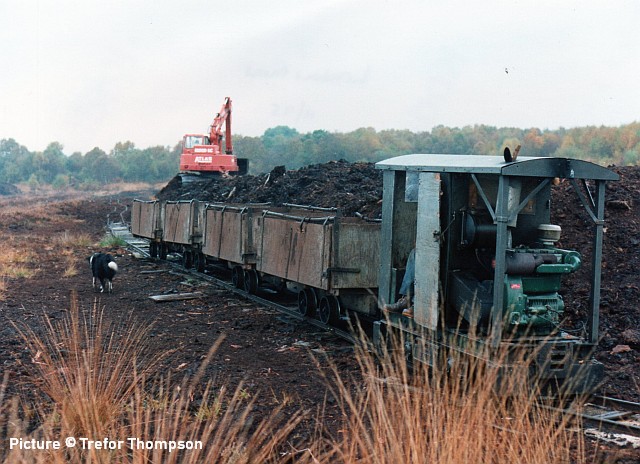
The wagons were loaded by a tracked excavator and then hauled back to the works for the peat to be processed.
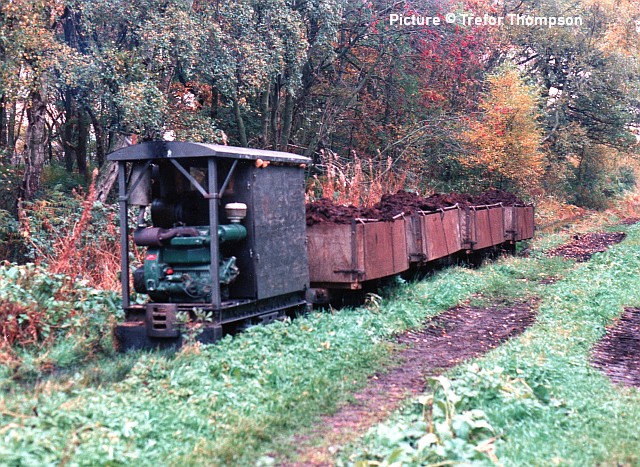
The Lister-built 'Rail Truck' loco, works number 50888, is of a design that left the factory without bodywork; this one has a home-made shelter.
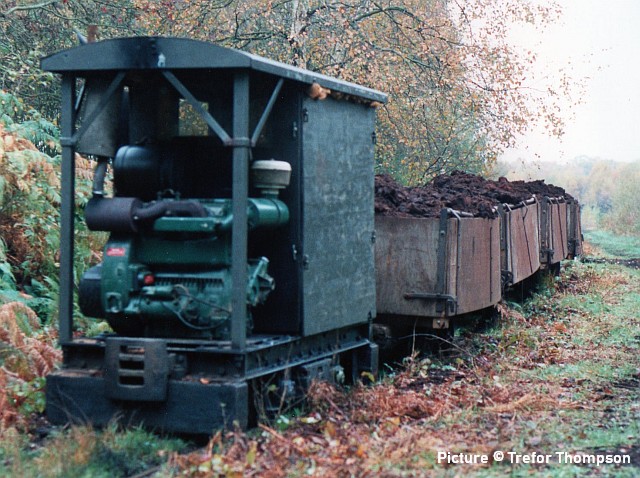
The railway closed in 2000 in favour of tractor haulage, and the extraction has since ceased.
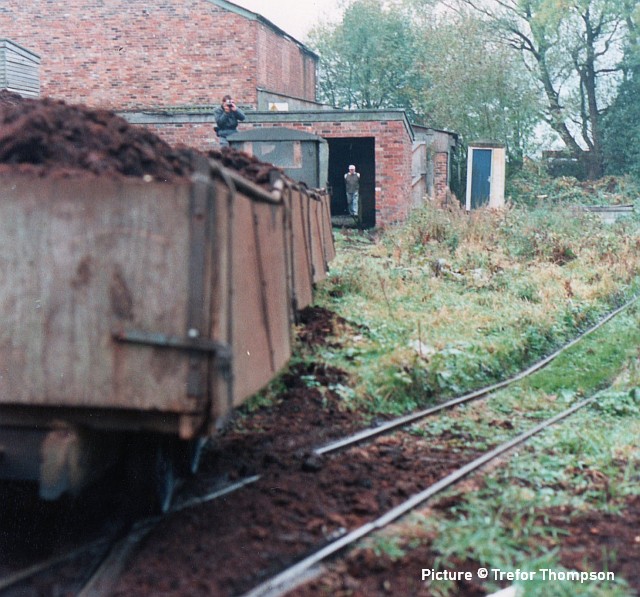
Railways of this kind are now very rare in the UK.
Scrapyard Surrealism
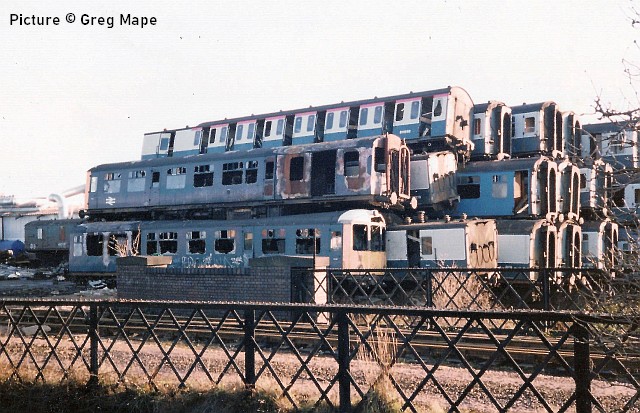
Two pictures of Vic Berry's scrapyard in Leicester taken in the early 1990s by Greg Mape. Note the ex-Buxton line Class 104.
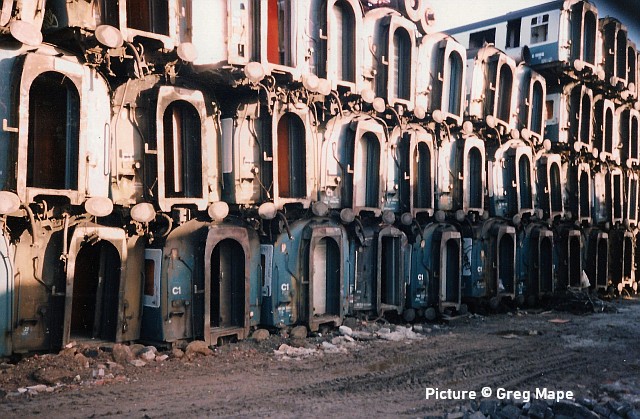
North Wales Coast home page | Archive | Previous Notice Board